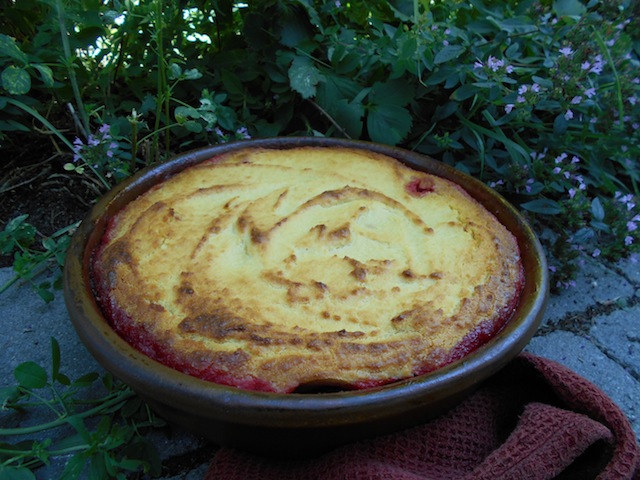This year is the 10th anniversary of the GO BOX Gardening Project! (Yes, we’ve changed our name.) We have learned a lot over the last decade. Some insights have been very surprising and go against permaculture’s current wisdom. I would like to share some of these insights for your consideration.

It’s harvest time for the stone fruits at the GO BOX Gardening Project! These plums will soon be ready for eating. MMMmmm!
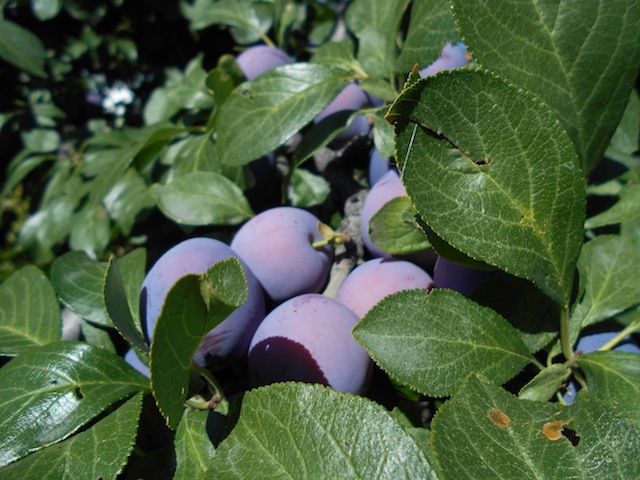
These dark plums are fantastic dried. They will be ready for harvest in a few weeks.
So how much does a permaculture garden or forest garden cost? Not as much as you might think. The GO BOX Gardening Project had an initial cost of under $1000 for the base trees and shrubs. We also had to get a formal landscaping plan and have a consultation with a local arborist, which costed more than the plants. However, most people wouldn’t have to contend with this cost. In the spring of each year we spend about $100 on bedding plants and seeds for annuals. This cost does not include any livestock or feed which adds to the cost of a permaculture garden but greatly increases the nutrient density of the food output. So, over the ten years of operation, the plant portion of the permaculture garden has cost us a total of $2000 not including the tribute to the bureaucrats.
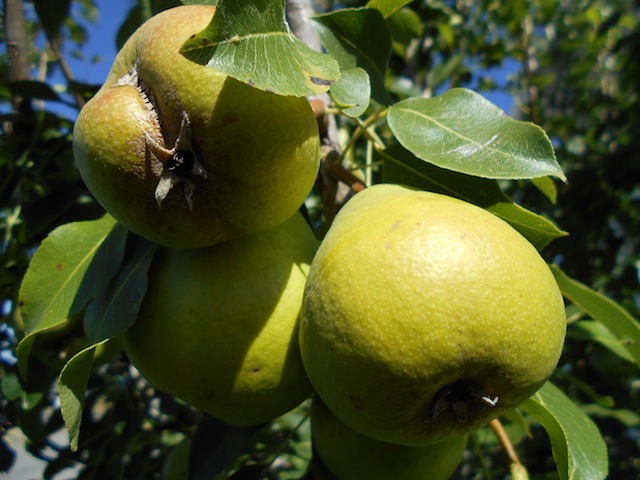
This pear tree is an example of a tree that is unhappy where we placed it. Even though it doesn’t provide good fruit, the tree provides shade and privacy for the house, two very welcome services.
During the first five years, the permaculture garden produced little. Since then, the permaculture garden has produced a bounty of fresh food far beyond the use of our household. Every year now we over produce raspberries, cherries, plums and apples. We even have a FREE u-pick for the community to help utilize this bounty. During migration, the birds stop and refuel at the garden too.
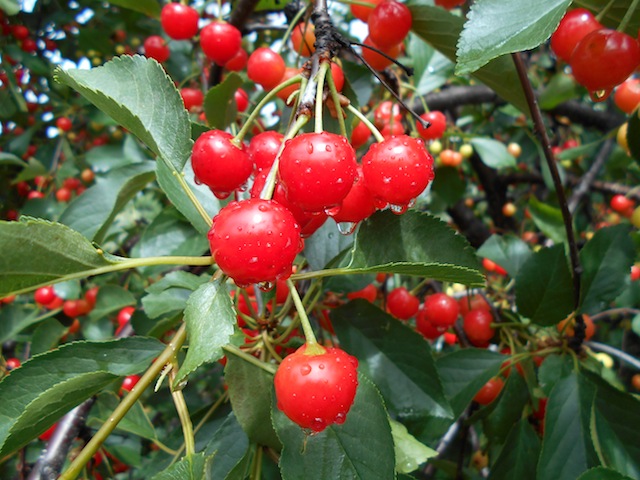
The GO BOX Gardening Project has been doing a FREE u-pick for a number of years now. It’s becoming a yearly tradition!
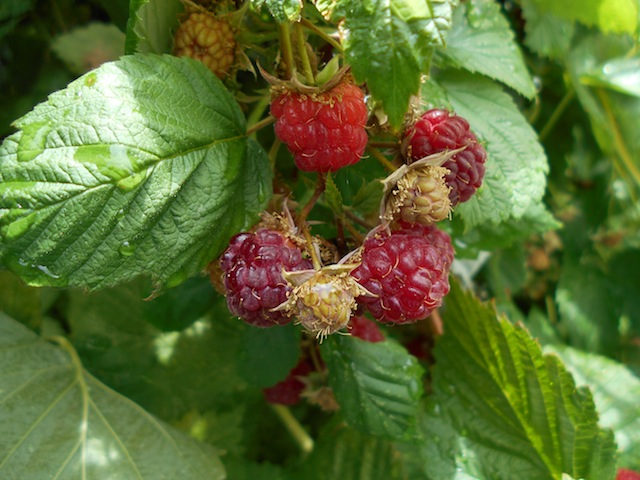
Raspberries are a favorite for the FREE u-pickers. We have LOTS every year. It’s our best harvest.
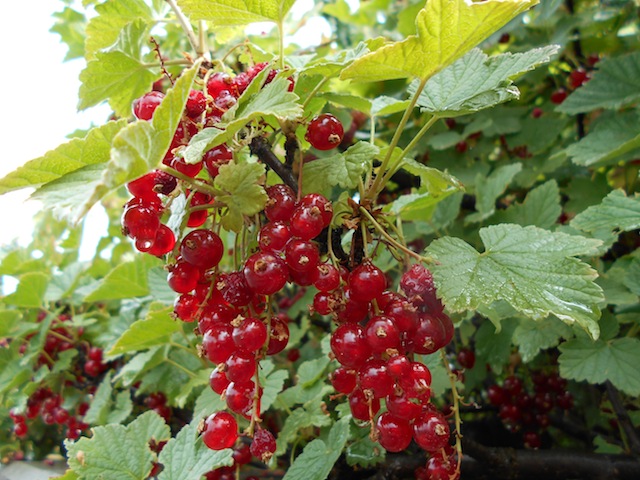
The red currents are a favorite for the jam makers at the FREE u-pick.
The annual garden and hoop houses produce an excessive amount of lettuce, kale, herbs, Chinese greens, cucumbers, tomatoes and numerous summer and winter squashes. We also use an indoor growing unit for winter microgreens, sprouts and for starting bedding plants. With a permaculture garden you can forget about the 100 mile diet and eat the 100 meter or 100 foot diet!
Even though we started with a formal plan with professional advice the permaculture garden just evolved over time through trial and error… mostly through error. Many of the original plants died that first year. We had to rethink the whole concept. The land could only grow what the land could grow. So we brought in organic material from wherever we could find it. We used chickens over this organic material for a number of years to increase the soil fertility. For three years we just built soil before anything would really grow. Building soil was a lot of work!
Then things really started to happen. The sickly trees and shrubs came alive and started to thrive. We learned to spend even less money on plants by doing our own propagation and allowing volunteer trees to grow wherever they happened to sprout. We realized we weren’t the planners of this garden. We’re just the human help! The garden grew itself once we realized that we were really soil life farmers, not permaculturalists! The garden taught us not the other way around!
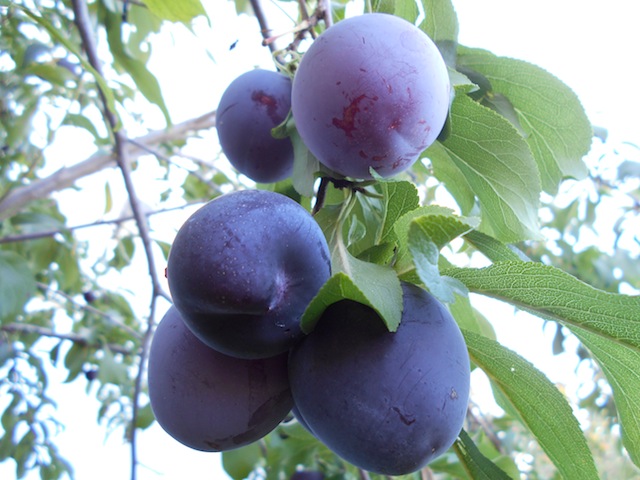
A few years ago, we planted a number of standard fruit trees which have done extremely well compared to the original dwarf stock fruit trees.
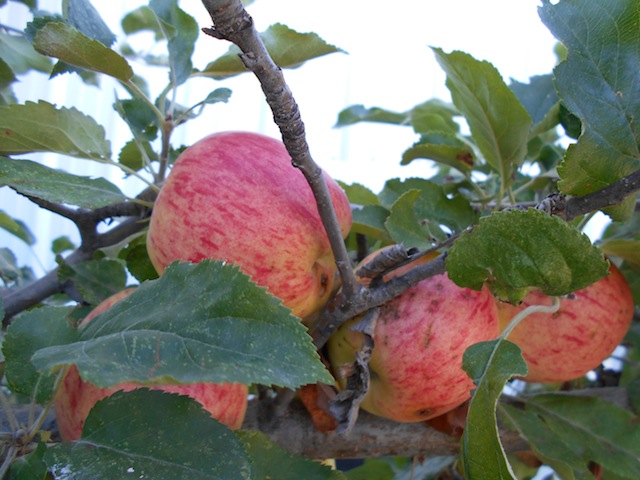
Our dwarf apples trees haven’t done well due to pest problems. Yes, we could do something about that but we are experimenting Mark Shepard’s STUN method!
“STUN stands for: steer, total, utter neglect. Of all the different ways to care for a plant, STUN is the simplest. Since nothing is done to the plant, around the plant, or applied to the soil, it is also the least expensive method of plant care.”
Restoration Agriculture: Real World Permaculture for Farmers by Mark Shapard
So, a permaculture garden doesn’t need to cost much. You can start a permaculture garden for a few hundred dollars and some sweat equity. Our garden has been a really great experience and has saved our household an uncountable amount of money that we would have otherwise spent on seasonal, organic foods. My only regret is that I didn’t plant more nut trees and less fruit trees as suggested by permaculture radical, Mark Shepard. The biggest surprise was learning to let go of the planning process and let the garden take the lead. The garden became our teacher. All that was required from us was to be good students and humbly listen to it.
“Aside from the obvious cost and labor savings when you don’t hand weed, hoe, cultivate or mow around trees, one of the most significant benefits of using STUN is the discovery of superior genetics. Think about it. If you plant 100 trees and ignore them, the only ones that survive did so because they had some sort of competitive advantage.”
Attached is the original landscaping plan drawn up for the city in 2006. The actual garden evolved to look nothing like the plan. We gave up on the recommended xeriscaping when we discovered that when this policy is properly implemented the results are a heating up of the ground which kills soil microflora and increases the ambient air temperature in an already hot city. In our opinion, xeriscaping is not a good policy for a hot city that has basically unlimited access to river water and is not experiencing a drought or likely to experience a drought in the near future. Also, xeriscaping requires weeding to look good which means increased herbicide use (bad) or expensive human labor (bad).
I NEVER thought I would say this, but a mowed grass lawn is starting to look like a much better option to me… and I can eat the dandelions!

This is the original landscaping plan drawn up for the city in 2006. The actual garden evolved to look nothing like the plan. If you’re interested, come for a visit someday!
“It is interesting that all the literature you can read and all the workshops you can attend are all telling you what to do, rather than not do. In addition, they only address two fundamental questions: “How do I keep this thing alive that wants to die? and “How do I kill this thing that wants to live?” This is entirely backwards! If some trees of mine want to die, I say, “Good riddance!” I don’t have the time and I’m not interested in spending the money on inputs to keep it on life support. I’m interested in discovering the genetics that are precocious, pest and disease resistant, and thrive in a regime of STUN.”

